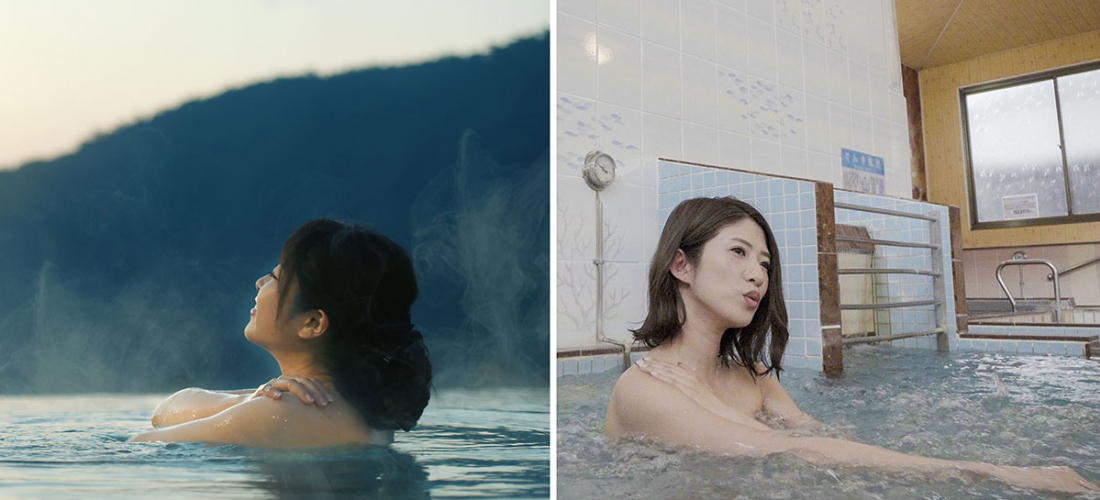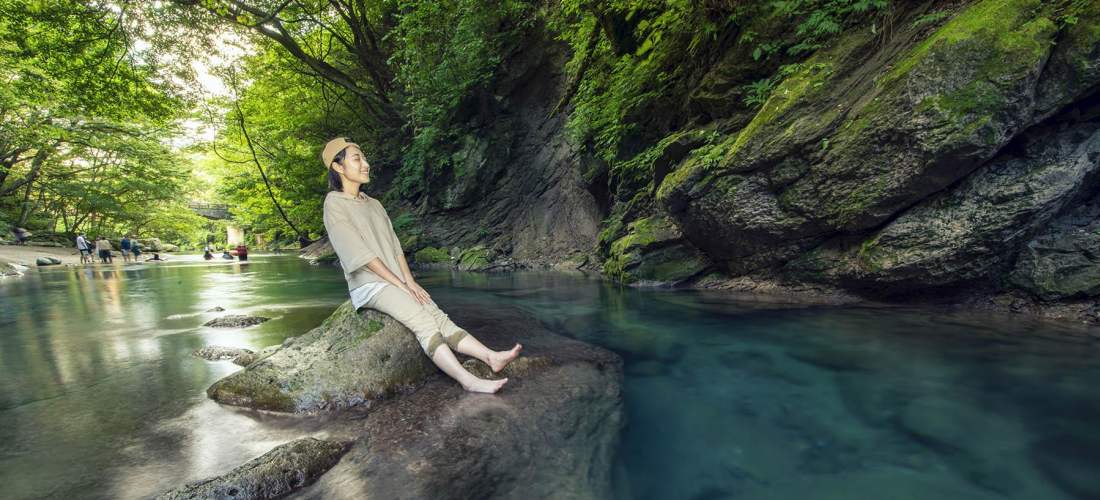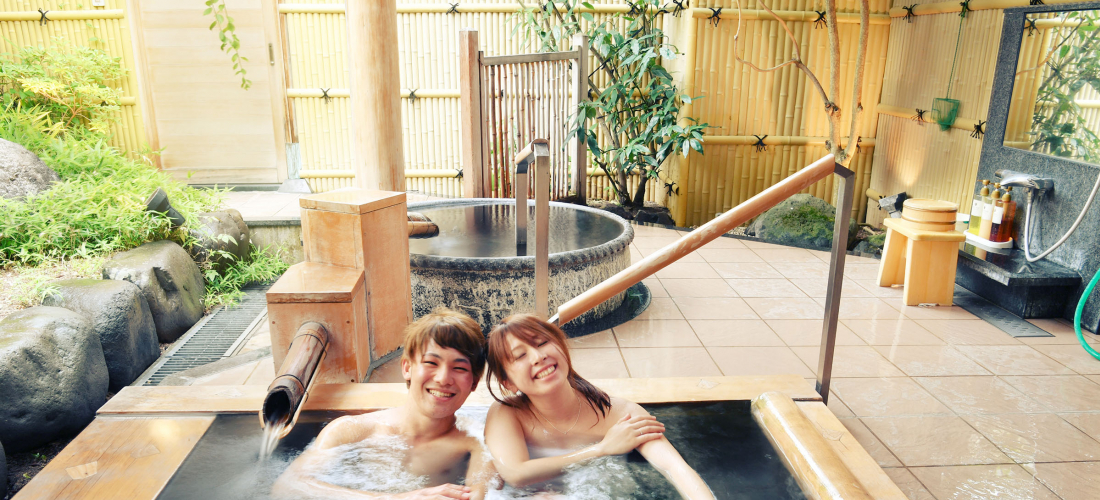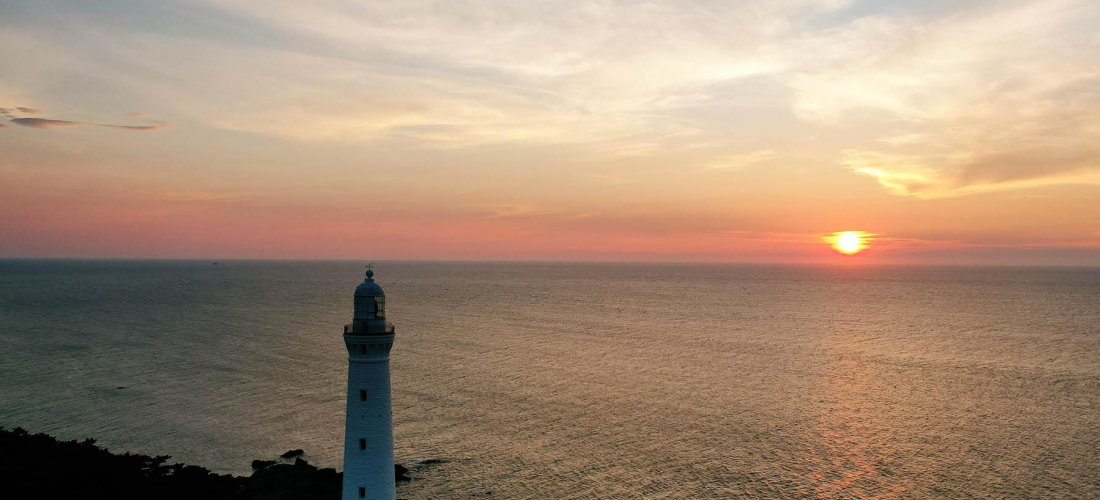CONTENTS
Feeling the heat? Head to the mountains (+lakes and onsen) for Japan’s most refreshing summer destinations.
Japan’s Summer Getaways
Japanese summers are inevitably hot and sticky, so however much appreciation the traditional culture might hold for each of the four seasons, there are plenty of ways to escape the summer heat as well. Those staying home might enjoy the night air in a breezy yukata, spend a day at the beach, or eat eel for "summer stamina," but for anyone with a little spare time and/or money, a trip to a cooler summer resort is a must for enjoying the season. Called "hishochi" (避暑地) in Japan, literally "heat evasion region," these getaway destinations tend to be up in the mountains at higher elevations, or located on the edge of a lake that might cool the air to a more tolerable level. The history of Japan's summer resorts is tied up with the history of colonialism, as they became popular in the late 1800s under the influence of a new influx of Western visitors that arrived after the Meiji Restoration (1868), many of whom had grown to enjoy the "hill stations" established in colonies all over Asia. These days, however, a trip to a "hishochi" during the peak of the summer heat is as popular in Japan as summer vacations are all over the world, and the concept has been thoroughly incorporated into local culture. So the real question is this: where are the most refreshing, relaxing, and delightfully chilly summer resorts in Japan?
Mountain Retreats
① Karuizawa, Nagano (長野県軽井沢市)
Ask about "hishochi" in Japan, and the very first suggestion you're likely to hear is Karuizawa, which has been the summer destination of choice for Japanese and foreign travelers in the know for a long time. Back in the 1950s, it was the first meeting place for Japan's emperor and empress emeritus, and in the '70s, John Lennon and Yoko Ono ate pastries together and walked down Karuizawa's tree-lined streets. The fresh mountain air, woodsy roads lined with quiet summer homes, and historic market streets have been slow to change over the years, and Karuizawa still has a surprisingly large number of bakeries to boot. What has changed is the shopping. These days, visitors to Karuizawa enjoy the fresh food and the refreshing weather, they see sights like Kumobaike Pond and Shiraito Falls, and they go shopping at Karuizawa Prince Shopping Plaza – a large outlet mall next to the train station. It's even a popular day trip destination from Tokyo!

② Nasu, Tochigi (栃木県那須郡)
The Nasu Highlands, an area sometimes referred to by the Japanese name Nasu Kogen, is a picturesque region of higher elevation spread across the volcanic slopes of Mount Nasu (那須岳), promising cooler summers and beautiful fall foliage, to boot. Nasu is less well-known as a hishochi than other cities, but if there's any doubt about whether the area is worth visiting or not, just look to Japan's royalty. In 1926, the Nasu Imperial Villa was built in as a royal getaway in the Nasu Highlands, and members of the imperial family still vacation in the summer house to this day. Visitors tend to look forward to hiking the wind-swept grassy mountainsides, visiting some of Nasu's more intriguing sightseeing attractions like Nasu Animal Kingdom or "The Killing Stone," and then finishing each day with a soak in a hot spring! (Nasu's onsen baths are popular throughout the year, and some have been around for as long as 1,300 years!)

③ Okutama, Tokyo (東京都奥多摩市)
Uniquely located within the city limits of Tokyo, Okutama is the ideal location for Tokyoites looking for a little respite from the city's humid summer, and the convenient location makes it popular for day trips as well. Most people think of Tokyo as just the 23 wards that make up the core of the city, but a large swath of suburbs and rural communities dotted with mountains and forests has actually made up a whole other western part of Tokyo since 1943. City slickers looking for an easy hike tend to flock to Mount Takao, but on the western outskirts of Tokyo, the Okutama area has half a dozen popular hiking mountains, plenty of lakes and rivers, caves and waterfalls, and abundant trails and camping grounds where visitors can enjoy all the greenery and the fresh breeze.
Ready to go camping in Japan? Pick up some cool gear at Japanese shops like And Wander and Muranokajiya!
④ Furano, Hokkaido (北海道富良野市)
In Japan (or anywhere in the northern hemisphere), there's one surefire way to find cooler weather: head north. Hokkaido is Japan's northernmost region, a huge island full of grassy pastures, dotted with wooded mountains, and during the winter it's covered in a thick blanket of snow. But summer brings warm, sunny weather to Hokkaido, with much less intense heat and humidity than other parts of the country. Quite a few cities on the island are popular as summer resorts, and Furano in particular is massively popular in July, thanks to the area's fields of fragrant purple lavender. The vibrant flowers were brought to the region sometime before WWII, and before wartime crop shortages changed local cultivation patterns, lavender farmers in the Furano area grew huge plots to supply Japanese fragrance and cosmetic companies. These days Farm Tomita and other popular growers mainly cater to sightseers, and there's nothing better than getting out of the city, taking a stroll through Furano's lavender fields, and letting a cool breeze waft the delicate lavender aroma your way.

⑤ Mount Aso, Kumamoto (熊本県阿蘇山)
Japan's southern island of Kyushu is known for green countryside, beautiful coasts, fresh food, and a touch of volcanic activity. In many parts of the region, that means plentiful natural hot springs, but in Kumamoto, the volcanic caldera of Mount Aso is the crown jewel of Aso-Kuju National Park. While the steam flowing from the mouth of this active volcano can get pretty hot, much of this huge park is breezy volcanic slopes and grassy vistas stretched across northern Kyushu, with horses happily munching on the soft grass that grows thickly in the fertile volcanic soil. Roll down the windows and take a road trip along the high-elevation Yamanami Highway as it slips through the cool air of Kyushu's mountains, and make sure to stop in at landmarks like Asahidai (朝日台) and Kusasenri (草千里).

Lakeside Getaways
⑥ Around Mount Fuji (富士山周辺)
Mount Fuji is the highest mountain in Japan, and its iconic snow-capped peak stays frosty white for much of the year, so perhaps it's no surprise that the surrounding area is full of resort towns that fill with vacationers each summer. But much of what makes this area so cool and comfortable in the summer isn't just the elevation, but the large bodies of water as well! Hakone might be the Mount Fuji destination located furthest from the mountain, all the way east in Kanagawa, but travelers love the city's many museums, onsen baths, and boat rides across Lake Ashi. Much closer to Mount Fuji, the Fuji Five Lakes area is just what it sounds like. There are five lakes and a collection of little resort towns at the foot of the mountain, and each one is full of relaxing accommodations, with windows looking out at the mountain peak over the lake water. You really can't beat the view.
PS: You can go camping there, too!

⑦ Nikko, Tochigi (栃木県日光市)
Spread across a landscape of landmarks like Mount Nantai and Lake Chuzenji, with multiple national parks and many more mountain peaks, Nikko is an undeniably beautiful area to find some fresh air when summer has you fleeing the big city. And while the natural landscape makes Nikko an excellent hishochi, the area is even more famous for its rich history, which draws sightseers throughout the year. Nikko Toshogu, covered in intricate and colorful carvings, has been one of the most beautiful shrines in Japan since it was constructed in 1617 as a resting place for Japan's "Great Unifier," Tokugawa Ieyasu. Nikko is a must-see for anyone who loves beautiful architecture, samurai stories, and Japanese history, but also hiking, campfires by the lakeside, and onsen as well.

⑧ Lake Tazawa, Akita (秋田県田沢湖)
During the long, snowy winters of Japan's northern Tohoku region, travelers come to Lake Tazawa to ski down the nearby slopes, covered in fluffy white snow. But when the weather warms and the ice melts, Japan's deepest lake is revealed, and this mirror of cerulean blue can be as deep as 423 meters (1388ft) in places. The surroundings are cooled by breezes blowing over the water, so visitors can relax by the lakeside and hike the surrounding hills, or like so many popular vacation spots around Japan, they can soak in the area's onsen (the area even has quite a few konyoku mixed baths). Gleaming above the water, the golden Statue of Tatsuko is Lake Tazawa's most recognizable landmark, inspired by a local legend. Tatsuko, as the story goes, asked the gods to grant her just one wish: she wanted to be beautiful forever. Perhaps the gods thought this was greedy, or perhaps they were just feeling extra tricksy that day, but instead of leaving Tatsuko with eternal youth, they turned her into a dragon, and cursed her to live in Lake Tazawa forever more. Of all the places to live forever, though, the beautiful resort of Lake Tazawa doesn't seem like a bad choice.

Onsen Destinations
⑨ Kusatsu, Gunma (群馬県草津町)
It might seem a little unexpected, but for many in Japan, hot and steamy hot springs are just the thing for a humid summer's day. If you're sweating anyway, you may as well go big or go home, with some of the hottest hot springs in Japan! Kusatsu is high in the mountains, 4,000 meters (13,000ft) above sea level, and the water that flows from Mount Kusatsu-Shirane's natural springs generally arrives in the city at such a scalding temperature that it would be dangerous to bathe in directly. Fortunately, Kusatsu has been a popular onsen resort for centuries, and over the years locals have found mesmerizing ways of mixing the hot water with air to cool it down to a safe temperature. These days, the luxurious baths and quaint streets make it one of Japan's most popular onsen destinations, and summer travelers often spend their time going between the baths and their traditional Japanese ryokan room, to relax on the comfortably cool tatami mat floors. (You can actually buy tatami mat rugs for your own room, if you want to recreate the experience.) One thing's for sure – when you get out of that steaming bath, the first hit of crisp mountain air outside sure feels refreshing, even in the summer!

⑩ Beppu, Oita (大分県別府市)
It might not be the hottest hot spring in Japan, but Beppu Onsen is unmatched when it comes to sheer quantity of steaming hot water that naturally gushes from the city's eight hot spring area (the only place in the world that produces more geothermally heated water is Yellowstone). According to an 8th-century legend, we can thank the god Okuninushi for bringing the healing onsen waters to Beppu to save the god Sukunabikona from sickness and death, and to this day visitors soak in the waters in hopes of ameliorating all kinds of aches and pains. Many of the city's 2,909 hot spring vents are linked to bathhouses and onsen ryokan hotels, although a few of them aren't used for bathing at all, thanks to their unique peculiarities. The hot spring "Hells of Beppu" are a series of hot springs with high mineral content, strange qualities, or just unusual gimmicks, and they're made for viewing only. (Don't miss the bright blue and red "hells," the mesmerizing "hell" filled with endlessly bubbling mud, or the "hell" that's home to a whole family of crocodiles!) For those feeling a little overheated from all the hot springs, fortunately Beppu is wedged right in between a chain of mountains and a sandy bay shore. Beppu's mountains are actually at the opposite end of the same Yamanami Highway that runs through Kyushu to Mount Aso! The beach isn't very popular for swimming, but it is the location of an onsen-heated sandbath!

Get Ready for Your Summer Escape
When you start to really feel the heat, Japanese sellers offer a lot of products that verge on summer magic, from adorable tableware that brings a night of seaside fireworks shows into the home, to the shockingly effective cooling fabrics used for summer cushions and blankets. But if you've got a little extra time and room in the budget, there's no better way to make the most of summer than a trip to one of Japan's cool summer resorts for a little rest and relaxation! There are clearly plenty of great options, so figure out which destination is best for you, start shopping for all your summer travel necessities, and get going!
Details
NAME:Summer Resorts / Hishochi (避暑地)
Looking for the latest trends and products coming out of Japan? We've got you covered!

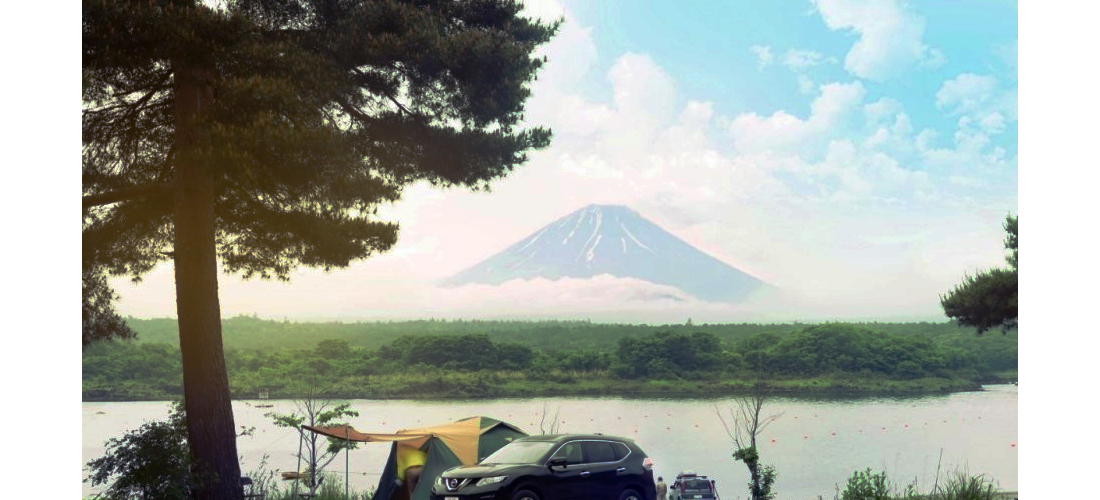

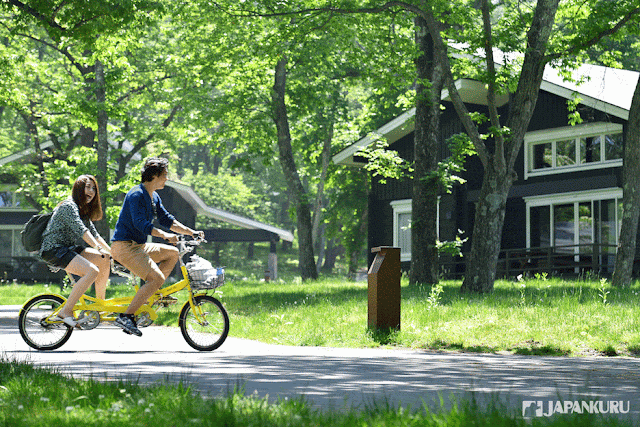

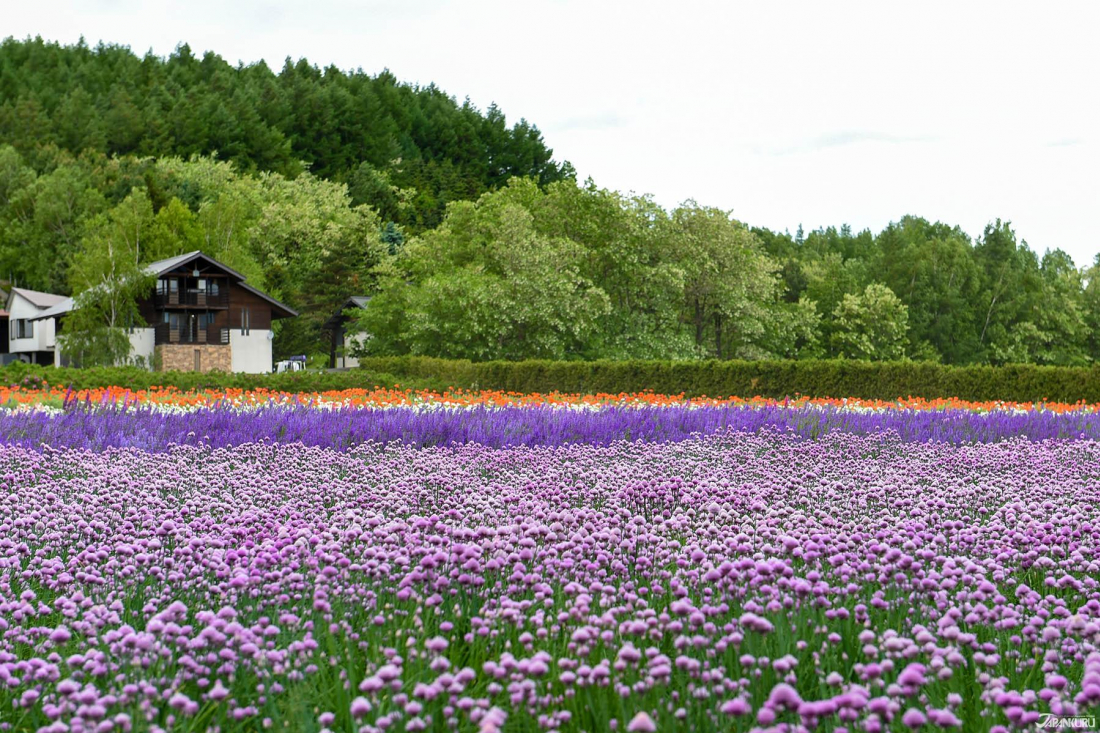
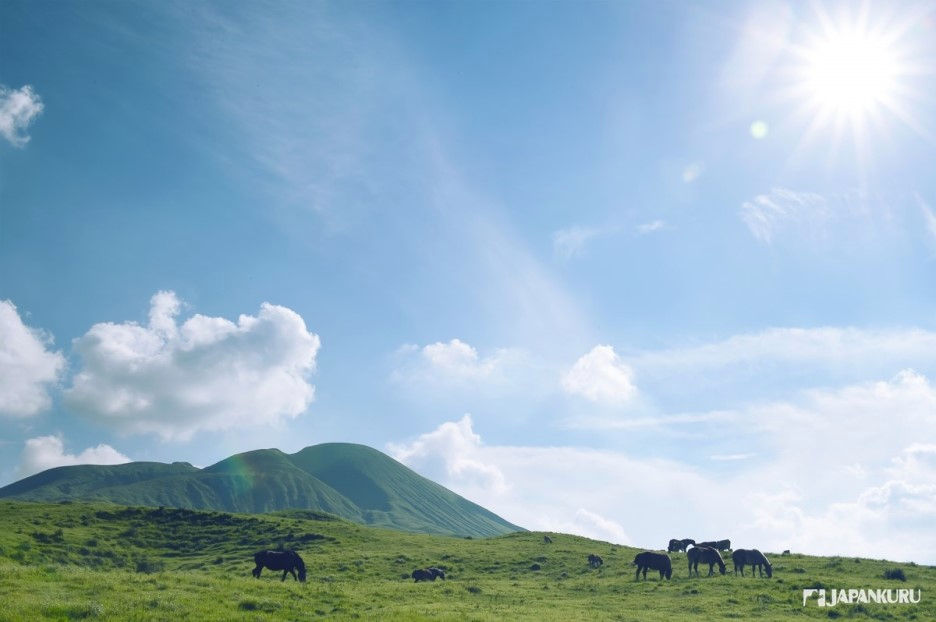
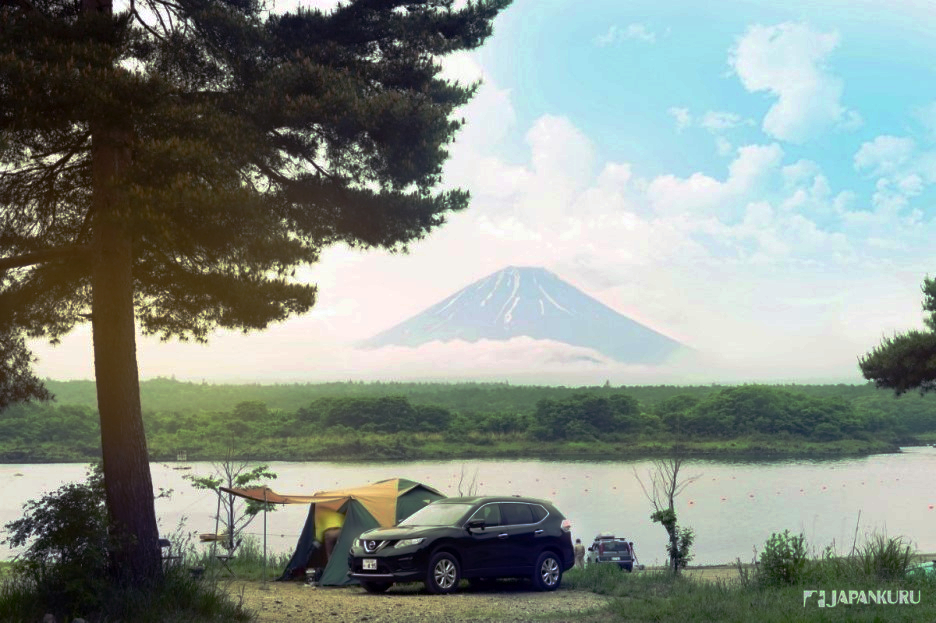
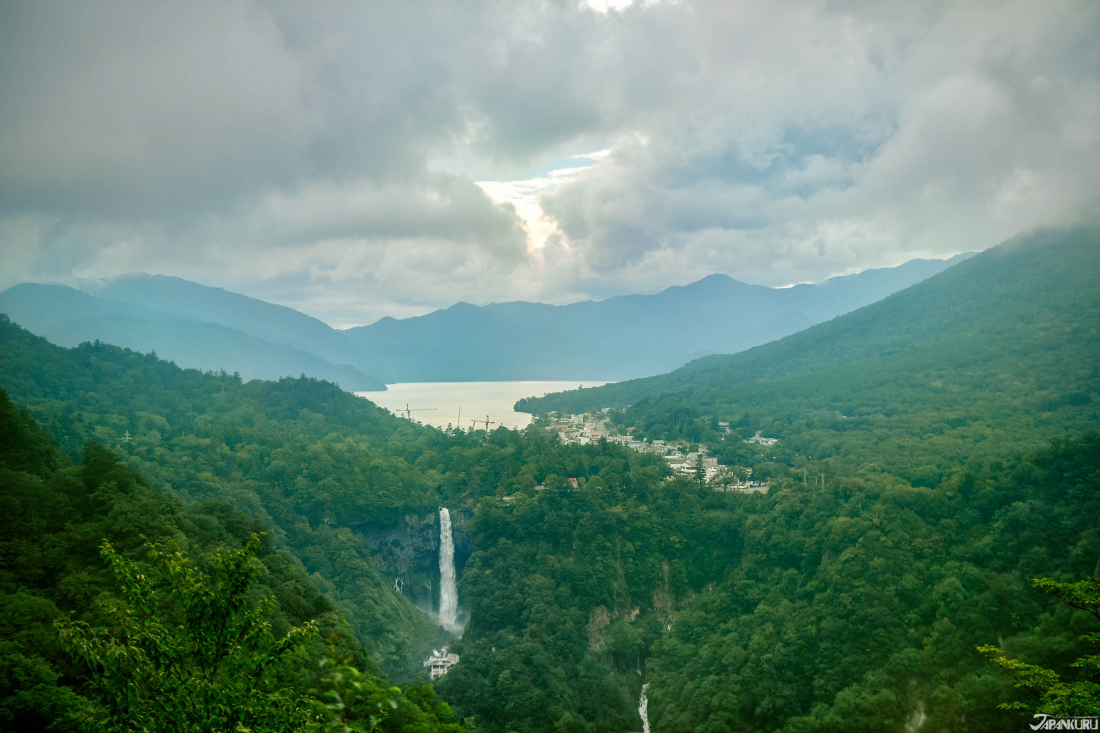

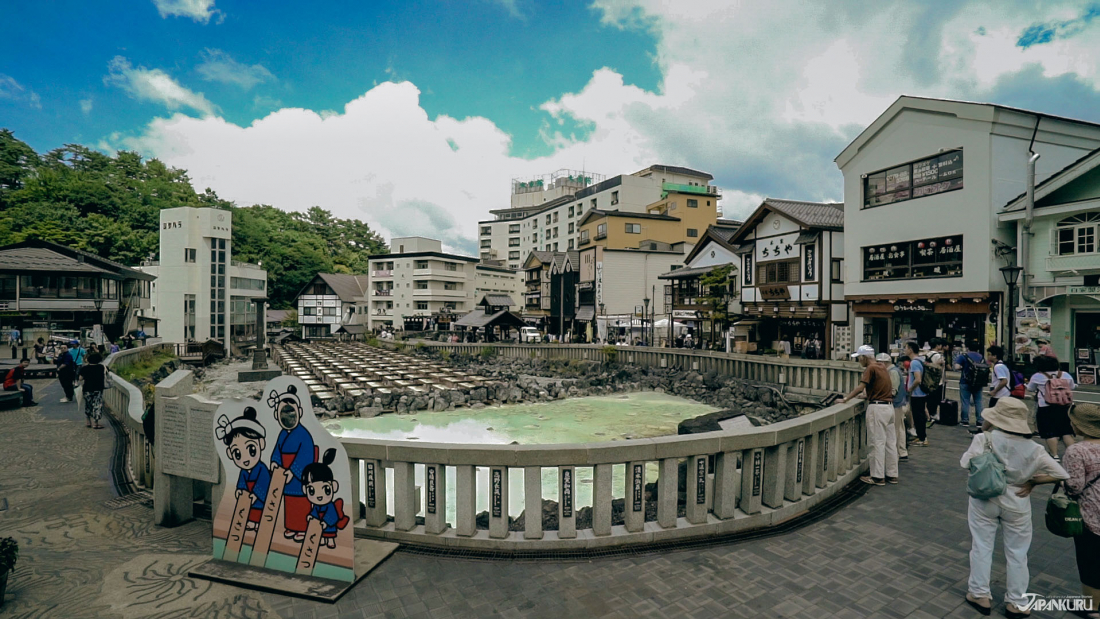
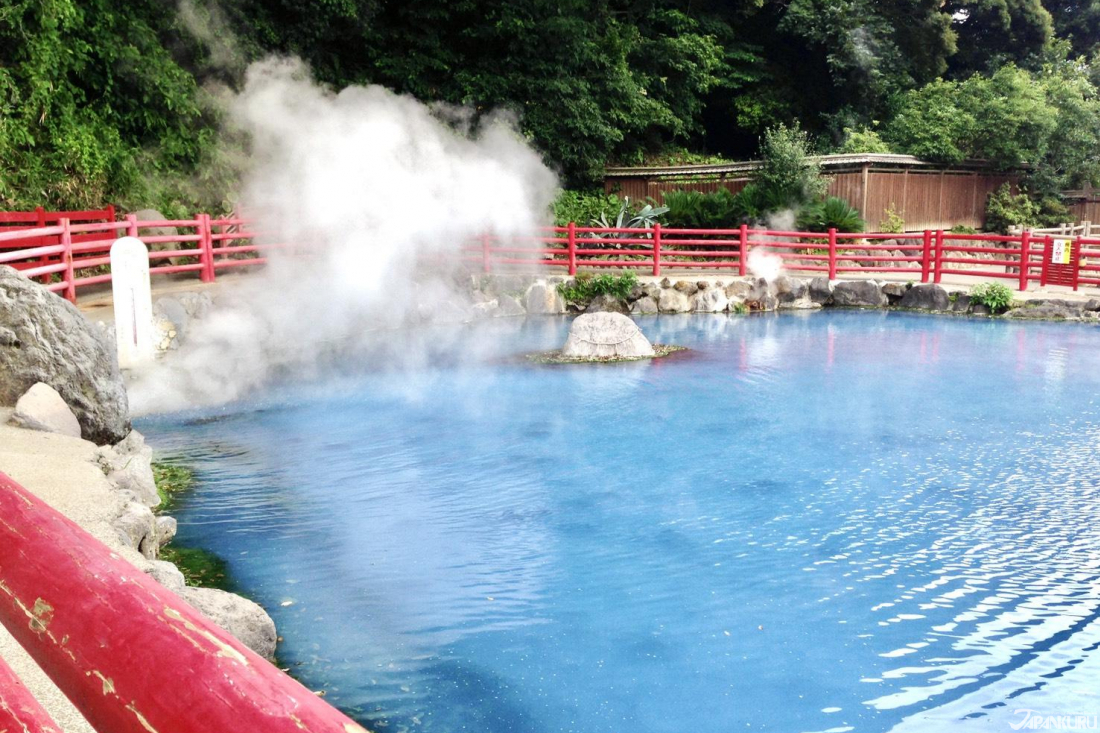





 >> Find out more at Japankuru.com! (link in bio)
#
>> Find out more at Japankuru.com! (link in bio)
#





 The Robot Restaurant is gone, but the Samurai Restaurant is here to take its place. Check it out, and don't forget your coupon!
The Robot Restaurant is gone, but the Samurai Restaurant is here to take its place. Check it out, and don't forget your coupon!
 신주쿠의 명소 로봇 레스토랑이 사무라이 레스토랑으로 부활! 절찬 쿠폰 발급중
신주쿠의 명소 로봇 레스토랑이 사무라이 레스토랑으로 부활! 절찬 쿠폰 발급중
 18歲以上才能入場的歌舞秀,和你想的不一樣!拿好優惠券去看看~
#tokyo #shinjuku #samurairestaurant #robotrestaurant #tokyotrip #도쿄여행 #신주쿠 #사무라이레스토랑 #이색체험 #할인이벤트 #歌舞伎町 #東京景點 #武士餐廳 #日本表演 #日本文化體驗 #japankuru #japantrip #japantravel #japanlovers #japan_of_insta
18歲以上才能入場的歌舞秀,和你想的不一樣!拿好優惠券去看看~
#tokyo #shinjuku #samurairestaurant #robotrestaurant #tokyotrip #도쿄여행 #신주쿠 #사무라이레스토랑 #이색체험 #할인이벤트 #歌舞伎町 #東京景點 #武士餐廳 #日本表演 #日本文化體驗 #japankuru #japantrip #japantravel #japanlovers #japan_of_insta
 코지마 x 빅 카메라 쿠폰으로 일본 가전 제품 쇼핑하기
#pr #japankuru #japanshopping #kojima #biccamera #japaneseskincare #yaman #dji #osmopocket3 #skincaredevice #日本購物 #美容儀 #相機 #雅萌 #日本家電 #일본여행 #면세 #여행꿀팁 #일본쇼핑리스트 #쿠폰 #일본쇼핑 #일본브랜드 #할인 #코지마 #빅카메라 #japankurucoupon
코지마 x 빅 카메라 쿠폰으로 일본 가전 제품 쇼핑하기
#pr #japankuru #japanshopping #kojima #biccamera #japaneseskincare #yaman #dji #osmopocket3 #skincaredevice #日本購物 #美容儀 #相機 #雅萌 #日本家電 #일본여행 #면세 #여행꿀팁 #일본쇼핑리스트 #쿠폰 #일본쇼핑 #일본브랜드 #할인 #코지마 #빅카메라 #japankurucoupon
































 Oita Hello Kitty Airport
Oita Hello Kitty Airport  Lands April 13th
Lands April 13th








